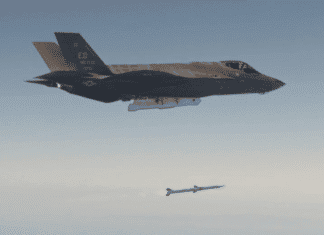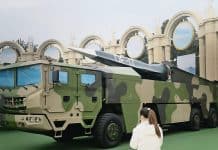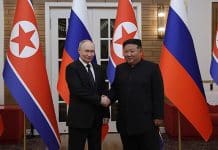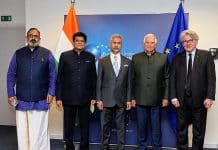According to its latest development strategy, Russia plans to consolidate global power by dominating international agricultural markets and undermining the Western-led global agricultural order.
Some believe that Russian President Vladimir Putin has prioritized Russia’s agricultural production for national power throughout the 21st century, compared to his predecessor, Boris Yeltsin. Among its most profitable commodities, Russia has been transforming itself from an importer to a leading global exporter of wheat over the past several decades. In 2018, Putin bragged that “agricultural exports exceed arms sales by more than a third,” highlighting a new source of national power. Five years later, Putin told the world that Russia had transformed from a net importer to the world’s largest exporter of wheat.
Russia used its war in Ukraine to enhance global agricultural power. Following Russia’s invasion of Ukraine, Russia severely undermined Ukrainian harvest and export capabilities and, relatedly, facilitated its own “record” wheat exports. Russia outperformed traditionally large European exporters like Ukraine, Poland, Romania, and France. Russian agricultural exports soared in 2023, due to a plentiful harvest season and the ruble’s decline which lowered costs for buyers. In December 2023, Russian Agriculture Minister Dmitriy Patrushev forecasted “another historical record” for Russian agricultural exports in 2024, to be achieved by increasing trade with “friendly countries.” Looking to 2030, Russian President Vladimir Putin envisions Russia becoming the fourth largest global economy. Russia’s international agricultural trade will become “a significant driver” of such efforts.
Russia seeks to both prove its necessity to the Western-led international agricultural order and to create its own order alongside “friendly” states. The Russian government claims that its grain exports feed the world – promoting an image of irreplaceability and power, even given its pariah status. Russian exports totaled a record $45 billion dollars in 2023. Despite a barrage of Western sanctions designed to constrict the Russian economy, agricultural commodities were exempt from early U.S. sanctions, for example, on the Russian economy. Relevant sanctions, instead, mostly focused on banking, equipment, fertilizers, and fuels. In March, Russia warned Europe that the European Union’s (EU) steep tariffs on Russian and Belarussian food products will only hurt the European market by increasing prices. Especially amid some poor harvest seasons by other major grain suppliers, many European countries continued to import Russian grain throughout the war. While Russia exported a limited portion of its grain to the EU in 2023, Russia, unfortunately, has a point. Recent external research by the Centre for Economic Policy Research found that seven out of ten EU member states surveyed still imported about 10% of their grain from Russia.
Additionally, Russia has heavily exported agricultural products to the “Global South” and other allies, which are notoriously less willing to support such Western-leaning political blocs and more willing to form their own. On the heels of manufacturing a global food crisis, Russia extended a small olive branch by announcing shipment of 200,000 tones of “free” grain to six African countries, in February 2024. Two months later, Russia proposed a grain trading platform exclusive to the “BRICS” intergovernmental organization comprising Brazil, Russia, India, China, South Africa, Iran, Egypt, Ethiopia, and the United Arab Emirates. In an attempted blow to so-called American unipolarity, the BRICS grain platform would sidestep the post-World-War II global order in which U.S.-supplied wheat and corn dominate global markets.
Between limited sanctions and many willing partners, Russian agricultural export have continued throughout the Russo-Ukraine War, and meanwhile, Russia has made moves to tear down the modern, global agricultural order. The Kremlin considers agriculture another industry for political competition. In 2014, Russia enacted sanctions on agricultural products from the United States, Canada, the EU, Australia, and Norway – most likely in retaliation against Western sanctions imposed after Russia’s illegal annexation of Crimea in 2014. Last year, Russia withdrew from and effectively obliterated the United Nations Black Sea Grain Initiative, designed to facilitate Ukrainian grain exports during the war. Russia cited Western “cheating” – a common refrain from Russia in international organizations. One month later, Russia passed a policy to facilitate payment for Russian agricultural products in roubles instead of dollars, to evade global sanctions. Further, in April of this year, Russia seized the assets of agricultural holding company AgroTerra – part of a broader effort to penalize companies from “unfriendly” countries. Russia has decided that the West’s rules aren’t fair, so it won’t play fair, either.
As it constructs its own agricultural order, Russia strategically bolsters its agricultural trade with countries that support Russia’s war. On February 24, 2023, one year after Russia’s invasion of Ukraine officially began, the United Nations General Assembly (UNGA) overwhelmingly adopted a resolution which called on Russia to withdraw its forces from Ukraine. Seven countries voted against the resolution: Belarus, North Korea, Eritrea, Mali, Nicaragua, Russia, and Syria. How has Russia rewarded these loyalists? With more agricultural trade – under the auspices of benevolence – bolstered by its war in Ukraine.
Take North Korea, for example, which has provided political and military assistance for Russia’s war. Since the UNGA vote, Russia has been strengthening agricultural ties with North Korea. Russia announced, in the summer of 2023, its intention to begin supplying North Korea, which has long suffered food shortages, with grain. In early 2024, government records showed that Russia shipped thousands of tons of flour and corn to North Korea. Months later, in April, the Russian government welcomed a high-level North Korean agricultural delegation which seeks to boost domestic agricultural productivity with Russian assistance. “Currently, we note the intensification of contacts, including in most areas of agriculture.” Russia and North Korea have maintained decades of cooperation, yet Russian food exports have been relatively limited until only recently. Following heightened bilateral engagement, Russian President Vladimir Putin visited North Korea for the first time in 24 years where he is expected to push for more trade between the countries.
Nicaragua has a similar story. By 2023, Nicaragua was importing lots of Russian wheat. That year, Nicaragua and Russia also negotiated a grain agreement, and Nicaragua explored plans to pay for Russian grain in rubles, instead of dollars. In October 2023, the Nicaraguan and Russian parliaments held their inaugural “Commission on Cooperation” which included interest to enhance agricultural trade. By comparison, public data reveal little agricultural trade between Nicaragua and Ukraine between 2022 and 2023. Russian agricultural trade with Nicaragua may reveal the Russian playbook: Foster global dependency on Russian exports by knocking out a major agricultural competitor, Ukraine, and then seize opportunities to bolster ties with friendly states through increased agricultural trade.
Despite the Kremlin’s big vision for Russian agricultural output in 2024, abnormal frost and drought threatens the upcoming harvest and undermines one of Russia’s most effective diplomatic tools. Estimates for Russia’s 2024 wheat production declined 10 percent in May. Yet Russia is still projected to be the world’s leading grain exporter. Despite downgraded harvest projections, Russia still plans to be a significant grain supplier to the global south. Based on 2023 exports, Russia will likely export the most grain to Turkey, Egypt, Mexico, Indonesia, and Vietnam, according to data from ProZerno. Other top importers included Algeria, Bangladesh, Iran, Pakistan, and Saudi Arabia, so exports may increase there, as well.
The bad news is this: even if Russian grain production fails to meet expectations, the damage has already been done. Russia has already destabilized pricing on the global grain market. Russia has already largely insulated itself from global sanctions. Russia has already undermined Ukrainian grain exports. Russia has already sparked political conflict within Europe over grain gluts. And Russia has already strengthened its diplomatic ties through grain trade. We can expect more Russian grain politicking throughout and after this summer and fall harvest season, most likely supported by states apathetic to or aligned with Russia’s international political agenda.
Thea Dunlevie is a graduate student at Georgetown University’s Security Studies Program. The opinions expressed here are her own.




